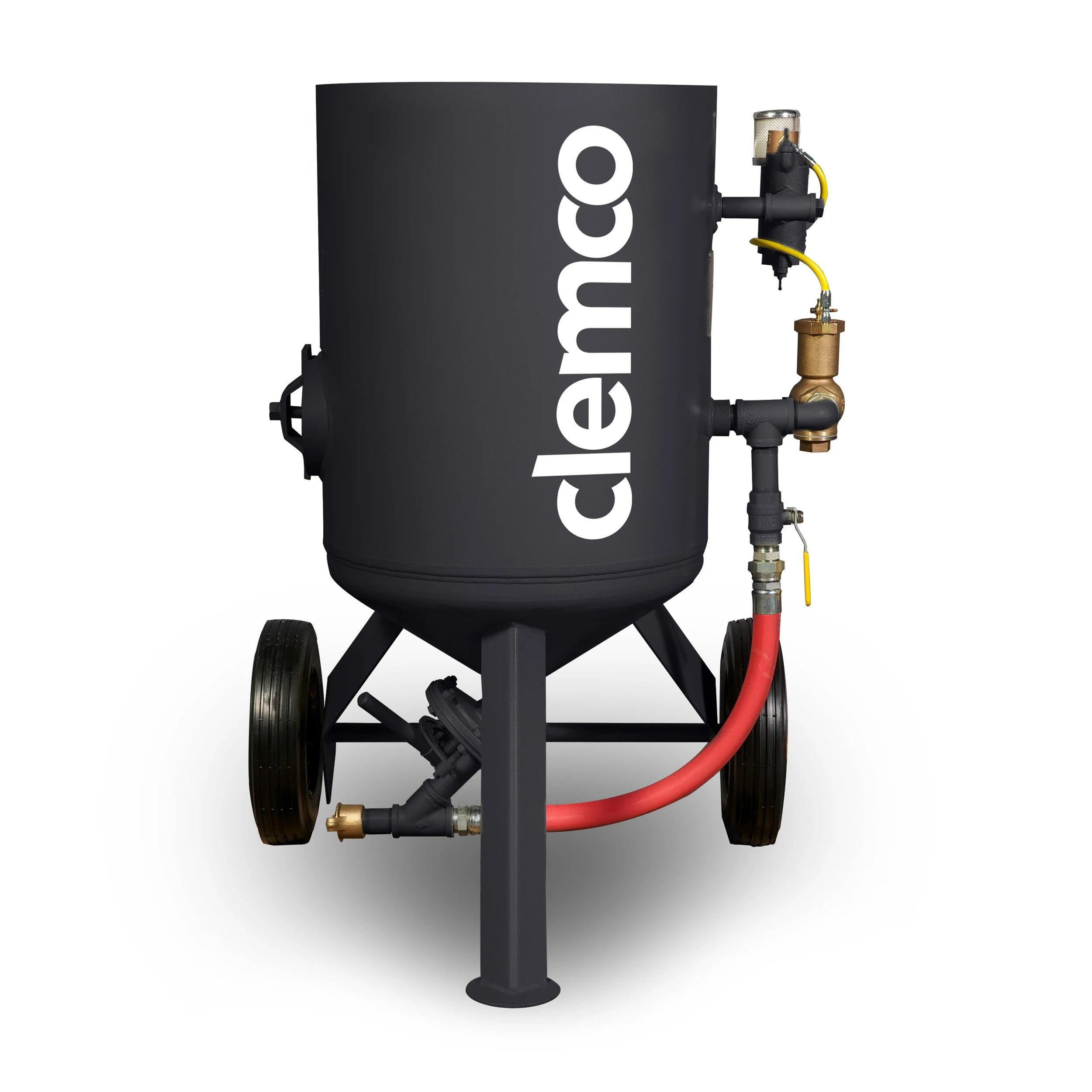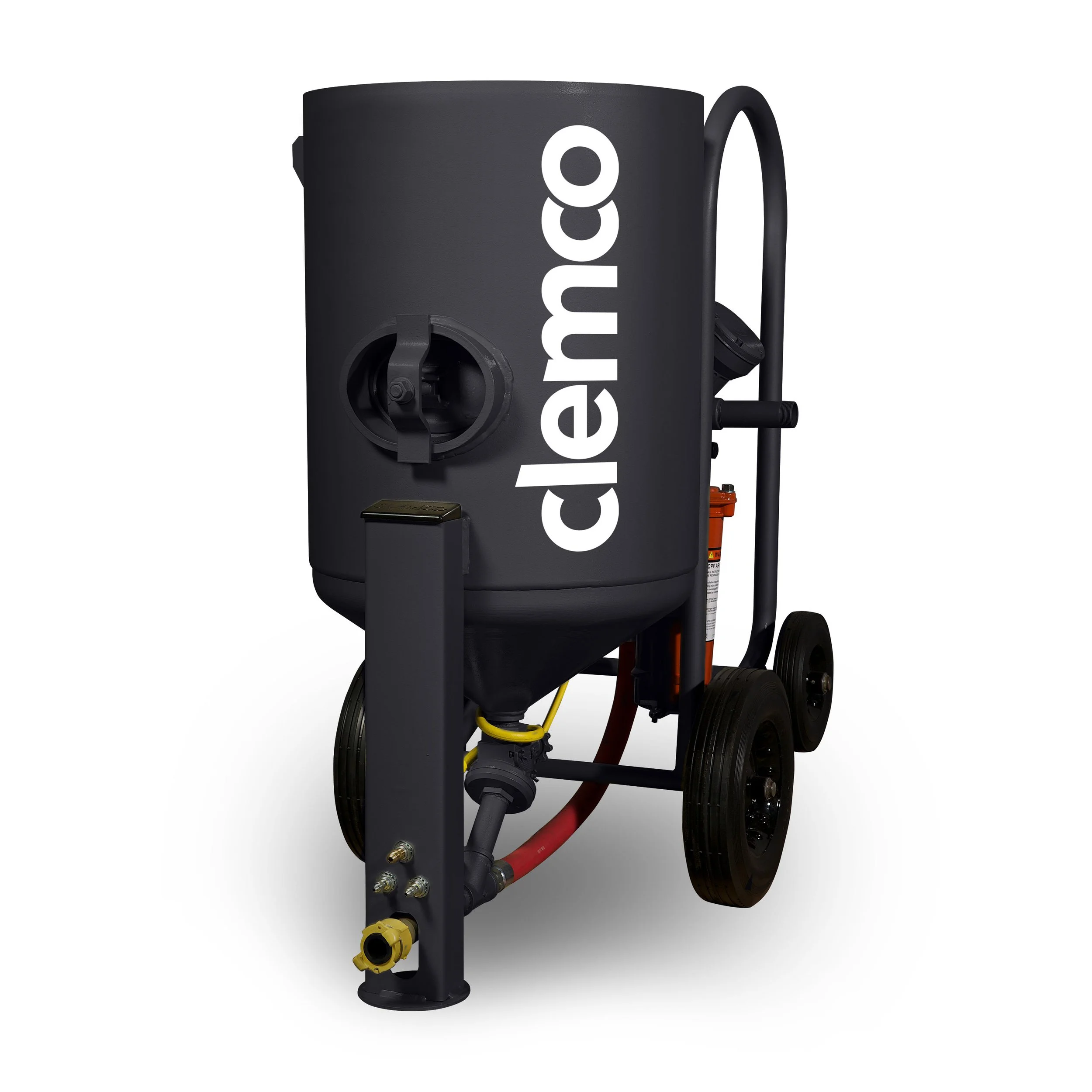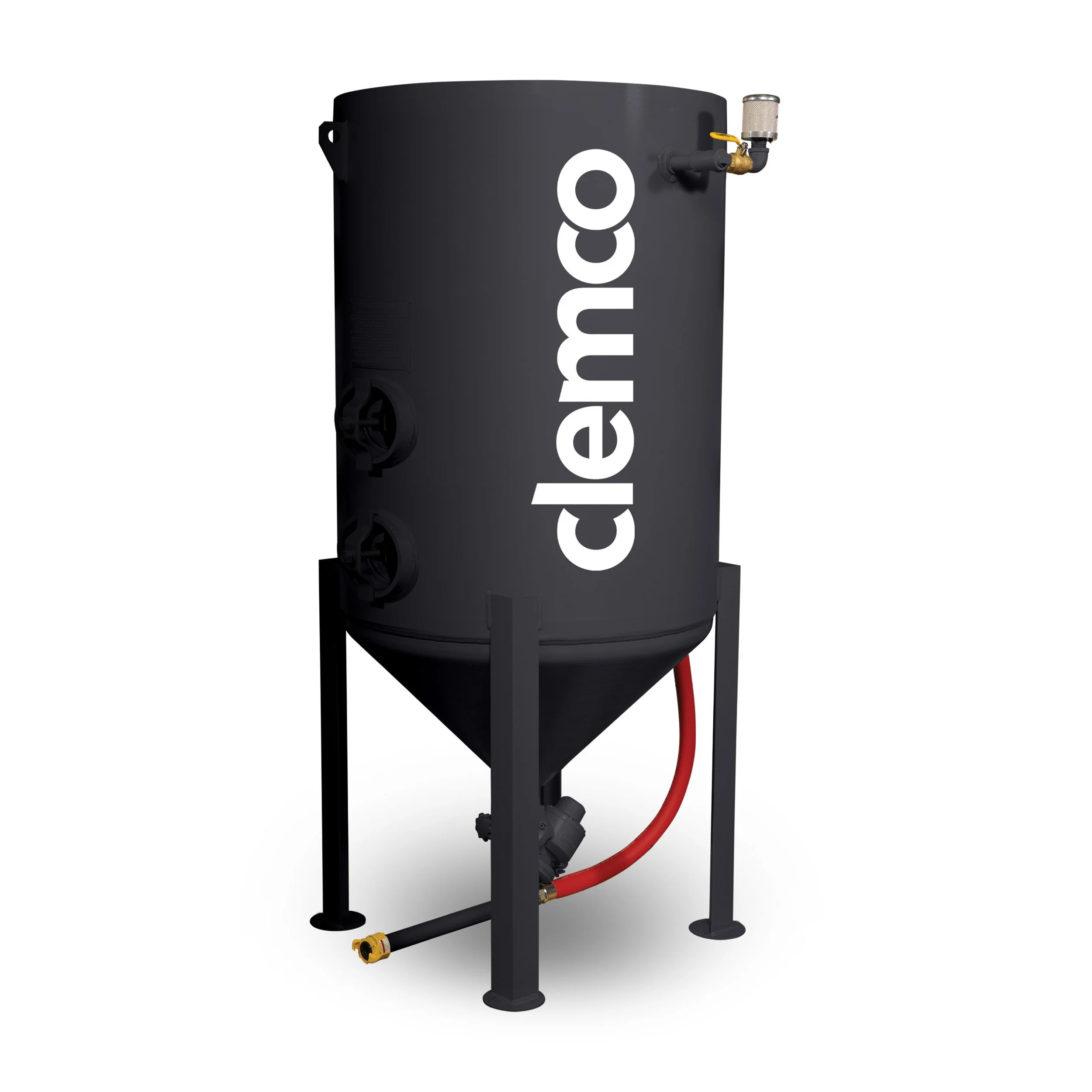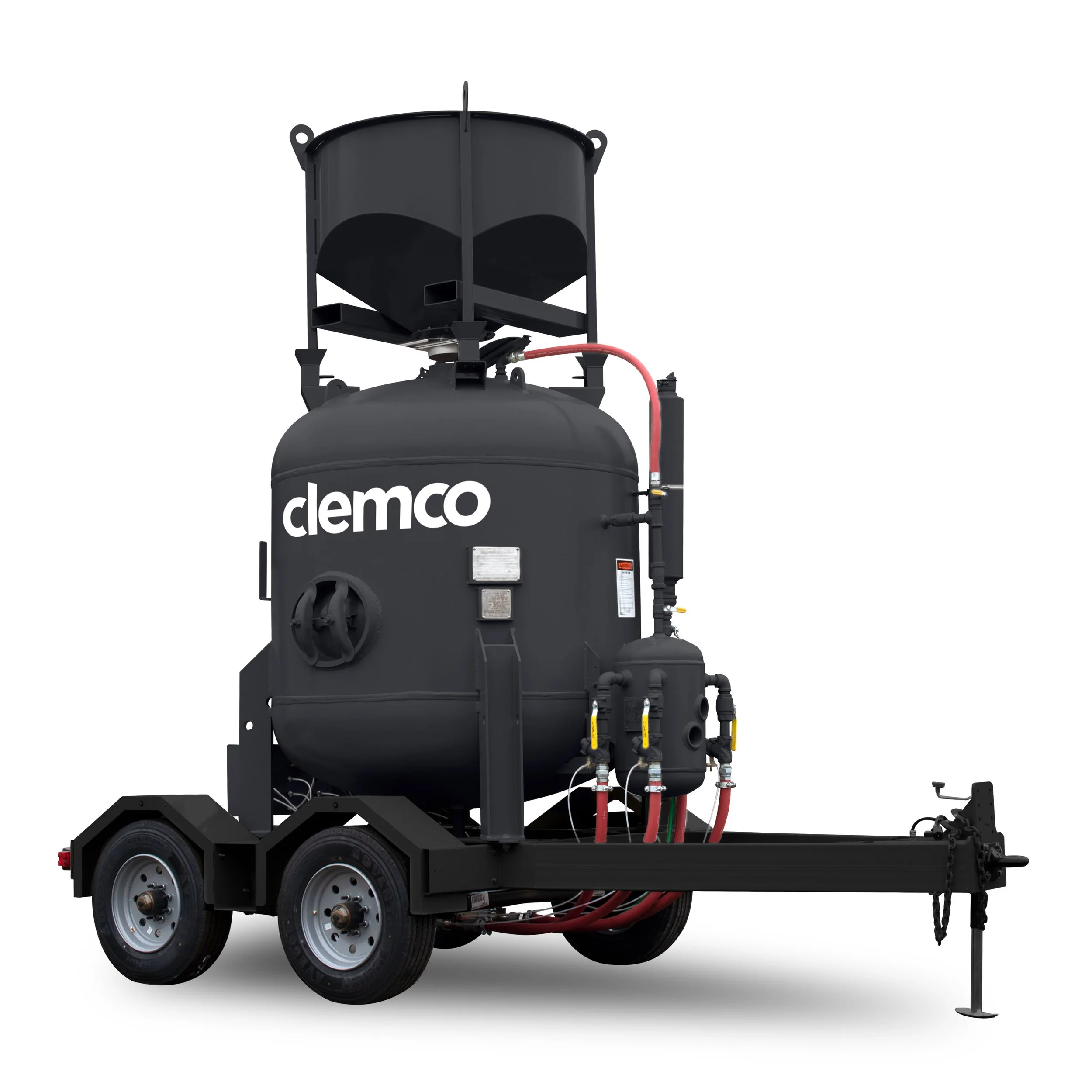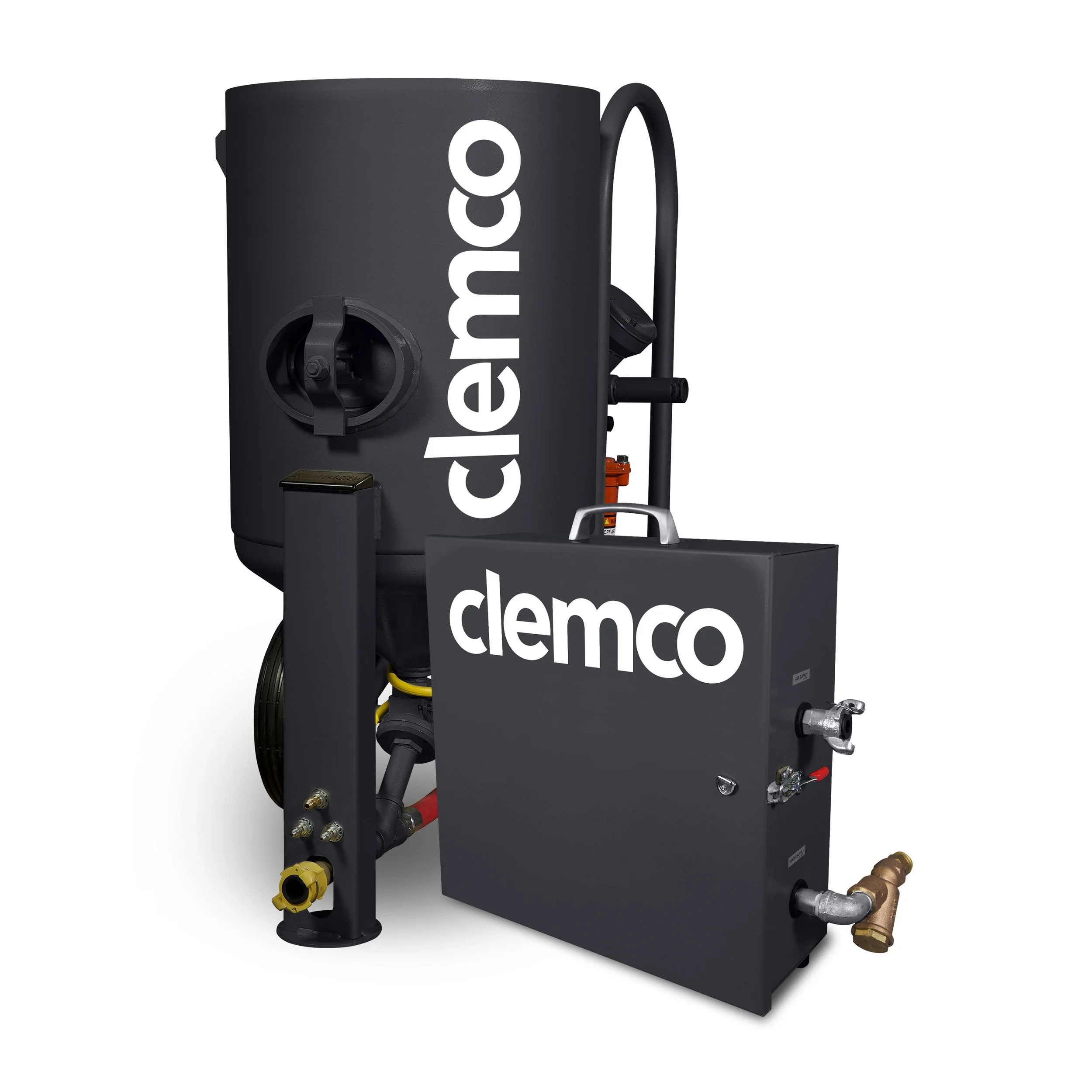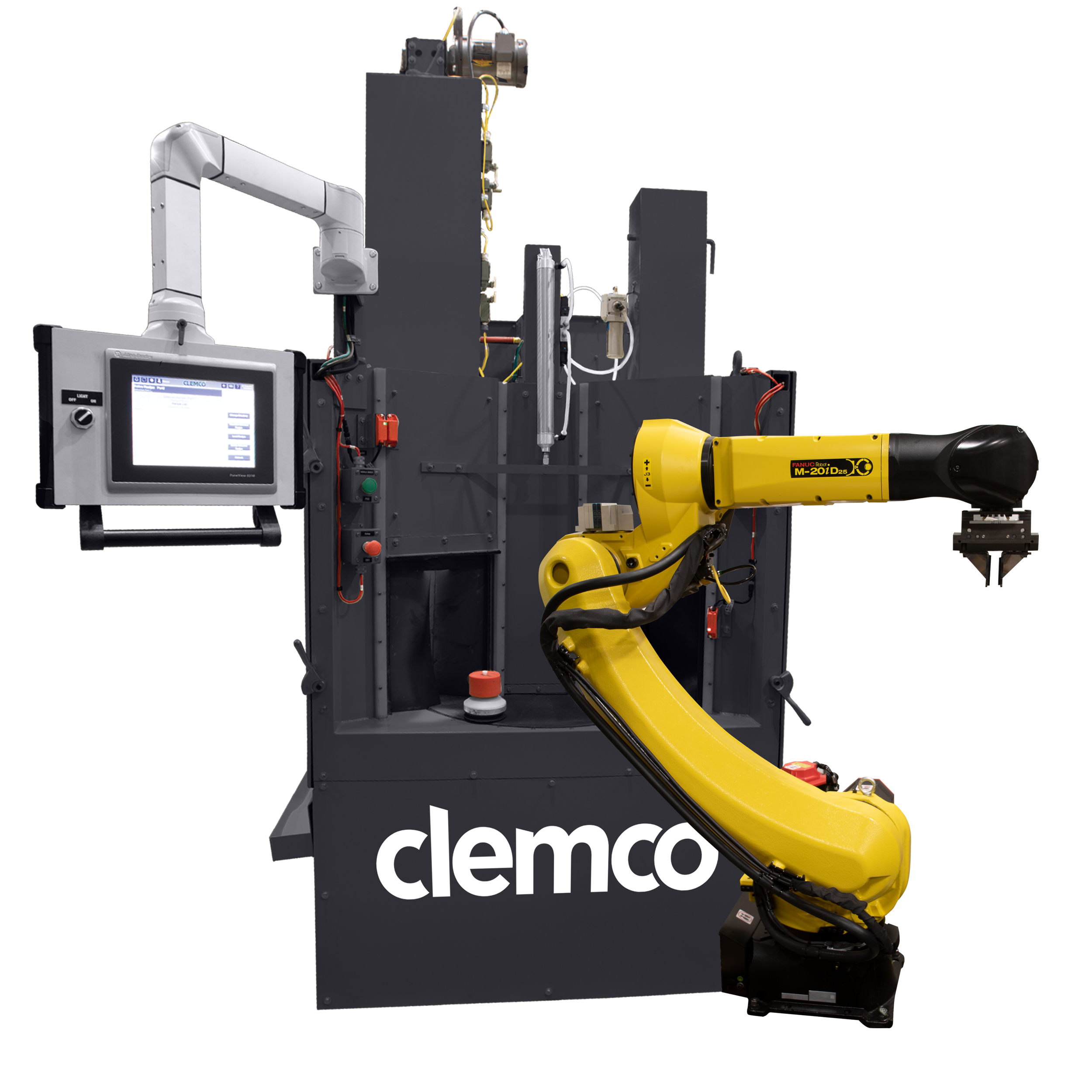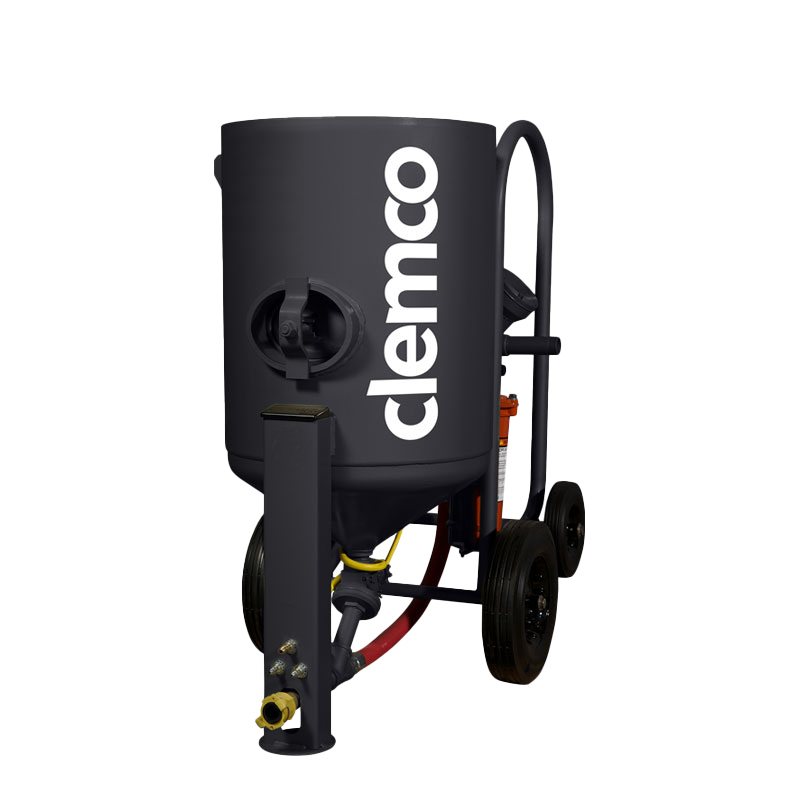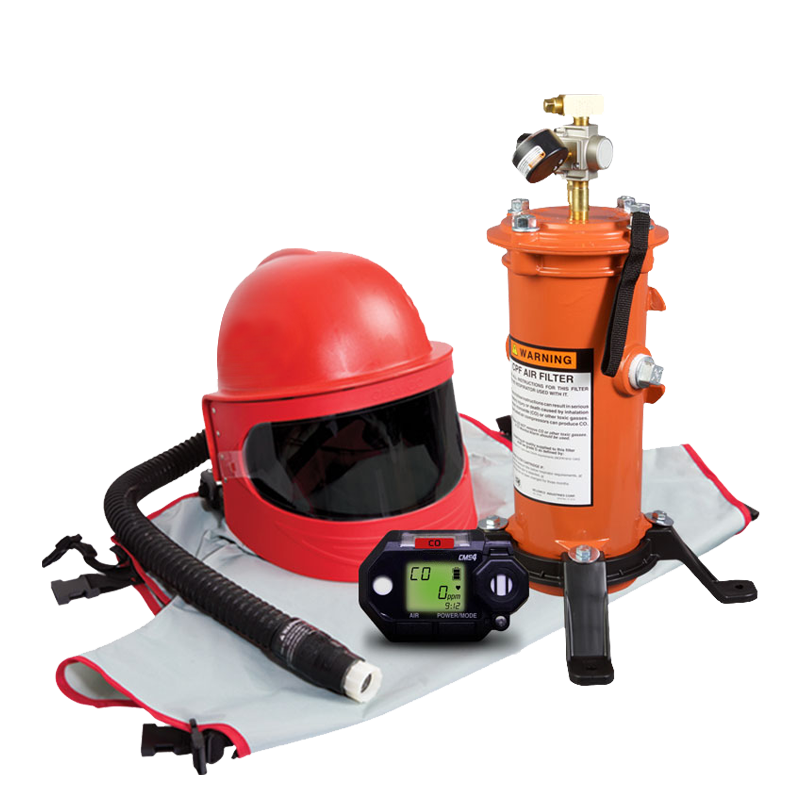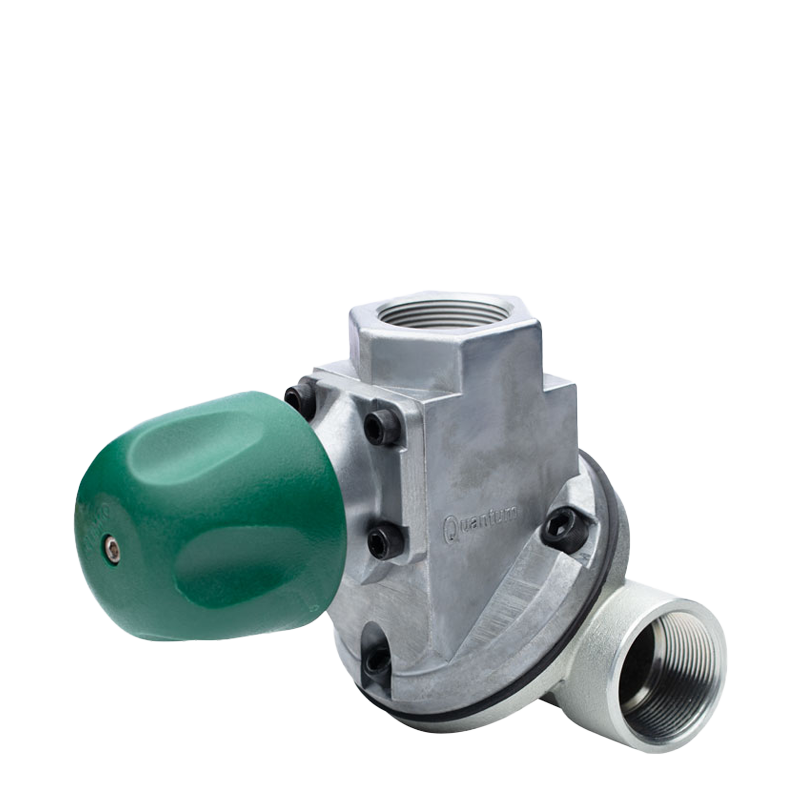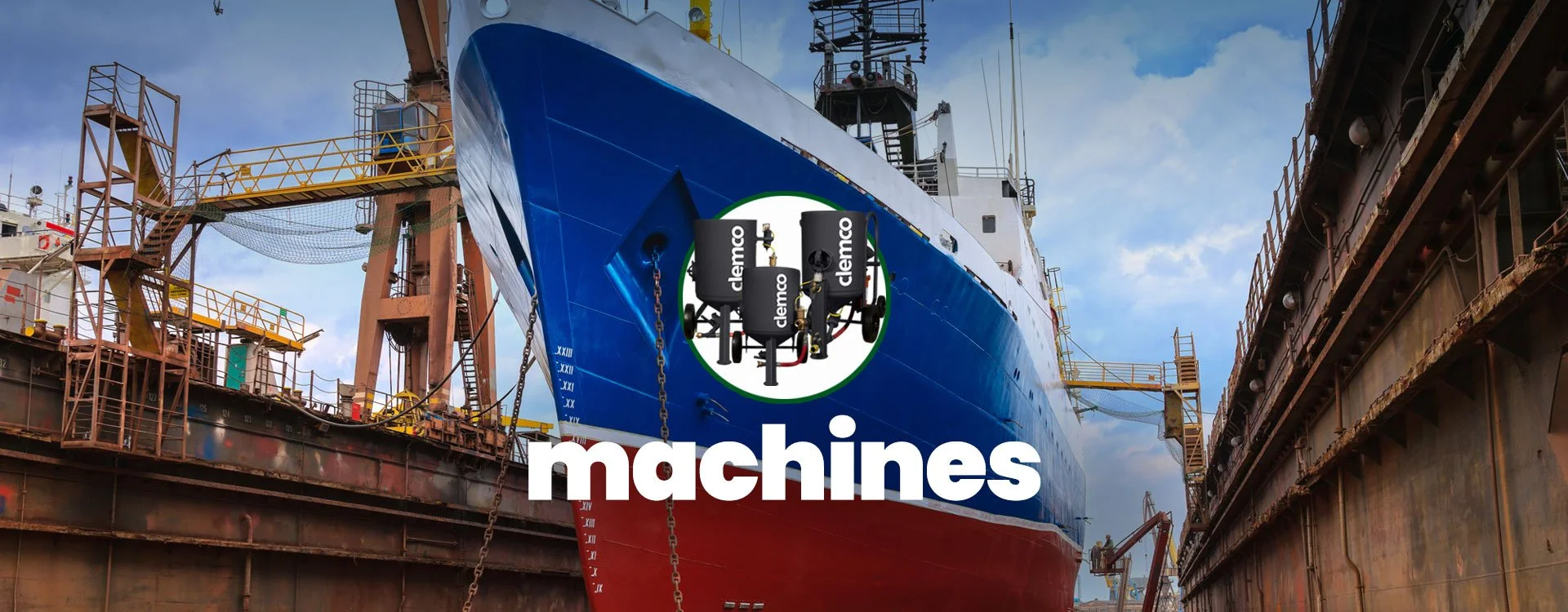
Abrasive Blast Machines
Portable Blast Machines
-
1/2-cuft Classic and 1-cuft Classic
Perfect for Quick, Light-Duty Jobs: Ideal for touchups, small-scale surface prep, and blasting tasks that don’t require heavy-duty equipment.
Great for Tight or Remote Access: Compact and portable—can be carried up stairs or along pipelines, making them ideal for hard-to-reach areas.
Minimal Air Requirements: Suitable for sites without access to large air compressors, allowing for more flexible deployment.
Highly Maneuverable and Easy to Store: Lightweight design enables effortless storage, transport, and movement around complex job sites.
Designed for Multi-Tasking Contractors: Built for professionals who do a variety of tasks, where blasting is just one part of their broader responsibilities.
-
Clemco designs and builds engineered-to-order solutions for specialized conditions and parts handling to optimize your production process. Click Here to learn more.
Contractor Blast
Machines
-
Portable Power for Mid-Size Jobs: The 3-cuft Classic and 4-cuft Contractor machines are compact enough for transport in a pickup bed, yet offer more capacity than smaller units—ideal for half-day jobs and field work like blasting buckets, trailers, or infrastructure surfaces.
Versatility and Mobility: The 3-cuft Classic is perfect for varied site work, while the 4-cuft Contractor adds extra durability and capacity—making it a great fit for rental fleets.
All-Purpose 6-cuft Machines: The Classic, Lo-Pot, and Contractor versions handle everything from small to large-scale blasting—bridges, pipelines, trailers, and wastewater tanks—with consistent performance.
Specialized 6-cuft Options: Choose the 6-cuft Lo-Pot for easier loading or the 6-cuft Contractor for enhanced durability and mobility in rental and high-usage scenarios.
Designed for Contractors: These machines are tailored for professionals who rely on abrasive blasting as a core business, providing rugged, flexible solutions for a broad range of demanding applications.
-
Clemco designs and builds engineered-to-order solutions for specialized conditions and parts handling to optimize your production process. Click Here to learn more.
Stationary Blast
Machines
-
Extended Blasting Time: The 8-cuft Dual-Chamber Machine enables continuous blasting by alternating chambers, minimizing downtime for refills.
Ideal for High-Demand Environments: Designed for use in blast rooms or with timer-controlled pressurization systems to support uninterrupted operations.
Efficient for Maintenance and Rehab Work: Performs the same tasks as smaller machines but with significantly longer blast cycles, boosting productivity.
Mobile Jobsite Flexibility: The 10 or 20-cuft Stationary Machines can be mounted on flatbeds or trailers for easy transport between locations.
Remote Staging Advantage: Larger stationary units can be positioned farther from the blast area, improving workspace efficiency and accessibility.
-
Clemco designs and builds engineered-to-order solutions for specialized conditions and parts handling to optimize your production process. Click Here to learn more.
Bulk Blast Machines
-
High Efficiency with Multiple Operators: Ideal for demanding industrial applications like shipyards and energy sectors, allowing multiple operators to blast simultaneously with minimal refill interruptions.
175-psi Rated Pressure Vessels: Delivers maximum productivity by maintaining higher pressure output for consistent, powerful blasting.
Fastest Refill Cycle in the Industry: Reduces downtime significantly, keeping operations running with little interruption.
Improved Super Sack System: Enhances media flow and ensures more complete emptying, boosting efficiency and throughput.
GritWizard Metering & Safety Features: Versatile abrasive valve handles a wide range of media; combined with proven pop-up valve design for safe, reliable vessel sealing.
-
Clemco designs and builds engineered-to-order solutions for specialized conditions and parts handling to optimize your production process. Click Here to learn more.
Wet Blast Machines
-
Effective Dust Suppression: Ideal for operations in confined, urban, or residential areas where minimizing airborne dust is critical for environmental safety and regulatory compliance.
Enhanced Productivity: Reduced dust improves operator visibility and decreases cleanup time, allowing for faster, more efficient work.
Superior Surface Preparation: Wetblasting thoroughly removes abrasive and contaminants, ensuring a cleaner surface and reducing the risk of coating failure.
Versatile Equipment Options: Clemco offers a full range of portable wetblast systems, including all-in-one units, conversion kits, and handheld tools.
Multi-Function Capability: Each wetblast unit can also perform dry blasting, washdowns, and air drying—expanding jobsite versatility with a single machine.
-
Clemco designs and builds engineered-to-order solutions for specialized conditions and parts handling to optimize your production process. Click Here to learn more.
Munkebo by Clemco
-
Munkebo is a specialized brand of vacuum and abrasive‑recovery systems under Clemco, offering solutions for media transport, recycling, and site clean‑up.
The systems are available in multiple sizes and capacities—capable of recovering up to 35 tons of blast media per hour and conveying over distances up to roughly 120 m (400 ft) depending on model.
Designed for portability and modular job‑site use: features include lifting eyes, forklift pockets, rugged reinforced housings, and a compact footprint adaptable to both mobile and fixed‑installation use.
The Munkebo systems support multiple types of blast media—both expendable and recyclable—and include options for dust and debris separation (e.g., cyclone pre‑separators) to improve media quality and system longevity.
Originally founded in 1963 in Denmark and later acquired by Clemco, the Munkebo brand leverages decades of surface‑treatment equipment experience and supplies global contracting and industrial blasting markets.
-
Clemco designs and builds engineered-to-order solutions for specialized conditions and parts handling to optimize your production process. Click Here to learn more.
Proven Performance. Rugged Reliability.
Generations of Excellence Transforming Our World, Worldwide since 1949
•
Generations of Excellence Transforming Our World, Worldwide since 1949
•
Generations of Excellence Transforming Our World, Worldwide since 1949
•
Generations of Excellence Transforming Our World, Worldwide since 1949 • Generations of Excellence Transforming Our World, Worldwide since 1949 • Generations of Excellence Transforming Our World, Worldwide since 1949 •


